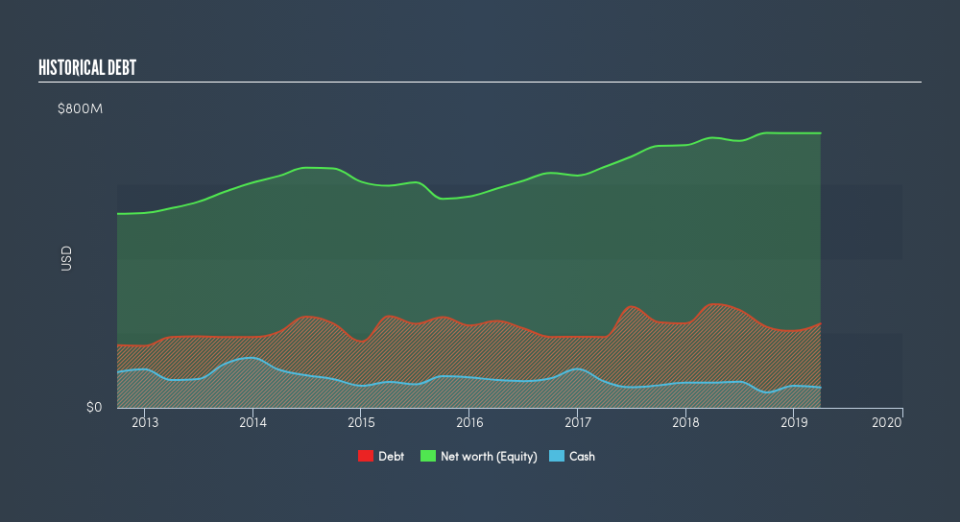All You Need To Know About Franklin Electric Co., Inc.'s (NASDAQ:FELE) Financial Health

Want to participate in a short research study? Help shape the future of investing tools and you could win a $250 gift card!
Small and large cap stocks are widely popular for a variety of reasons, however, mid-cap companies such as Franklin Electric Co., Inc. (NASDAQ:FELE), with a market cap of US$2.1b, often get neglected by retail investors. Despite this, commonly overlooked mid-caps have historically produced better risk-adjusted returns than their small and large-cap counterparts. FELE’s financial liquidity and debt position will be analysed in this article, to get an idea of whether the company can fund opportunities for strategic growth and maintain strength through economic downturns. Note that this information is centred entirely on financial health and is a top-level understanding, so I encourage you to look further into FELE here.
View our latest analysis for Franklin Electric
Does FELE Produce Much Cash Relative To Its Debt?
Over the past year, FELE has reduced its debt from US$278m to US$251m , which includes long-term debt. With this debt repayment, the current cash and short-term investment levels stands at US$54m , ready to be used for running the business. On top of this, FELE has generated US$153m in operating cash flow in the last twelve months, leading to an operating cash to total debt ratio of 61%, signalling that FELE’s debt is appropriately covered by operating cash.
Can FELE pay its short-term liabilities?
Looking at FELE’s US$284m in current liabilities, the company has maintained a safe level of current assets to meet its obligations, with the current ratio last standing at 2.13x. The current ratio is calculated by dividing current assets by current liabilities. For Machinery companies, this ratio is within a sensible range since there is a bit of a cash buffer without leaving too much capital in a low-return environment.
Is FELE’s debt level acceptable?
FELE’s level of debt is appropriate relative to its total equity, at 31%. FELE is not taking on too much debt commitment, which can be restrictive and risky for equity-holders. We can check to see whether FELE is able to meet its debt obligations by looking at the net interest coverage ratio. A company generating earnings before interest and tax (EBIT) at least three times its net interest payments is considered financially sound. In FELE's, case, the ratio of 13.38x suggests that interest is comfortably covered, which means that lenders may be inclined to lend more money to the company, as it is seen as safe in terms of payback.
Next Steps:
FELE’s high cash coverage and appropriate debt levels indicate its ability to utilise its borrowings efficiently in order to generate ample cash flow. Furthermore, the company exhibits an ability to meet its near term obligations should an adverse event occur. Keep in mind I haven't considered other factors such as how FELE has been performing in the past. I recommend you continue to research Franklin Electric to get a better picture of the stock by looking at:
Future Outlook: What are well-informed industry analysts predicting for FELE’s future growth? Take a look at our free research report of analyst consensus for FELE’s outlook.
Valuation: What is FELE worth today? Is the stock undervalued, even when its growth outlook is factored into its intrinsic value? The intrinsic value infographic in our free research report helps visualize whether FELE is currently mispriced by the market.
Other High-Performing Stocks: Are there other stocks that provide better prospects with proven track records? Explore our free list of these great stocks here.
We aim to bring you long-term focused research analysis driven by fundamental data. Note that our analysis may not factor in the latest price-sensitive company announcements or qualitative material.
If you spot an error that warrants correction, please contact the editor at editorial-team@simplywallst.com. This article by Simply Wall St is general in nature. It does not constitute a recommendation to buy or sell any stock, and does not take account of your objectives, or your financial situation. Simply Wall St has no position in the stocks mentioned. Thank you for reading.

